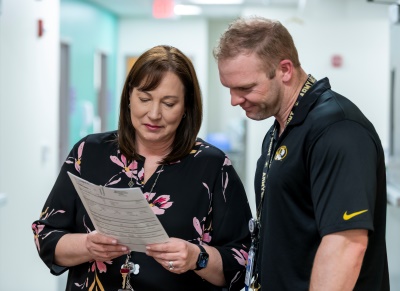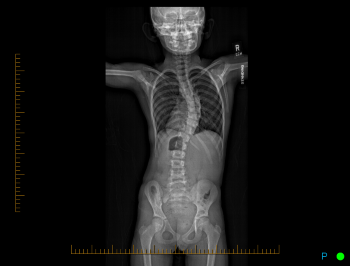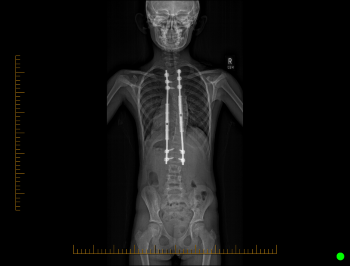Growing Rods for Spinal Care
Younger children need a different approach than older children. We want to be sure their treatment supports their growing spine, while also helping to control the spinal curvature.
When casting or bracing is not an option, we recommend surgery which allows the spine to grow. Below, you can find examples of growth friendly surgical options.
The type of surgery decided upon is dependent on the patient’s underlying condition, skeletal maturity (how much growth a child has left) as well as the magnitude and type of curve they have. Some younger children with a significant curve may be a candidate for a non-fusion, guided growth, procedure. Your surgeon will assist you in determining which procedure is best for your child.

Growing rods
If your child has a worsening spinal deformity, but their body will still be growing, we can implant traditional growing rods.
Growing rods allow for the chest and lungs to continue to grow while controlling the deformity. Traditional growing rods are placed in the back during surgery. The area of the curve is spanned by one or two rods, and they are attached to the spine above and below by hooks or screws.
Your child will recover in the hospital. This normally takes a few days. Your child will return approximately every six months for a lengthening procedure to help the rods keep up with their growth.
Lengthening surgeries are normally an outpatient surgery in which your child gets to go home on the same day. Once your child is done growing, they will often have a final surgery for posterior spinal fusion in order to prevent any further spinal deformity.


MAGEC growing rods
MAGEC growing rods, which are similar to a traditional growing rod, are surgically attached to the spine and sometimes to the pelvis.
MAGEC rods can be lengthened in the clinic in just a few minutes using an external magnet. This spares your child from repeated trips to the operating room under anesthesia. The lengthening takes place every few months at a clinic visit.
- Spine Care
- Speak with Our Team
- Bracing Options for Scoliosis
- Growing Rods
- Halo Gravity Traction
- iSpine Clinic
- Mehta Casting
- Microdiscectomy for Disc Herniation
- Outreach Services
- Spinal Fusion
- Spine Care Consultations
- Spine Surgery: What to Expect
- Spondylolysis and Spondylolisthesis
- Vertebral Body Tethering
- Meet the Team
- Orthopedics